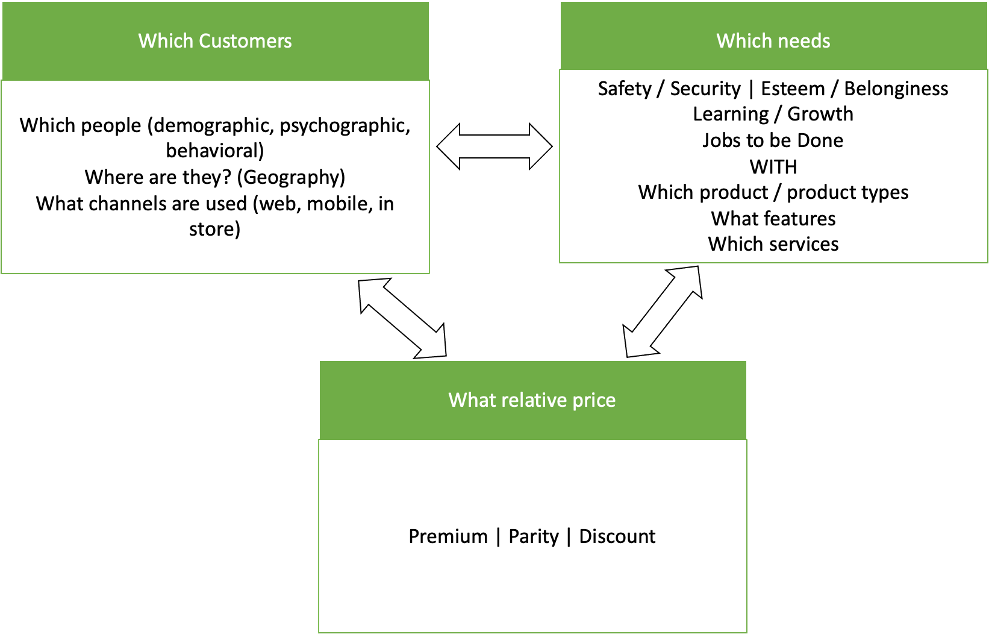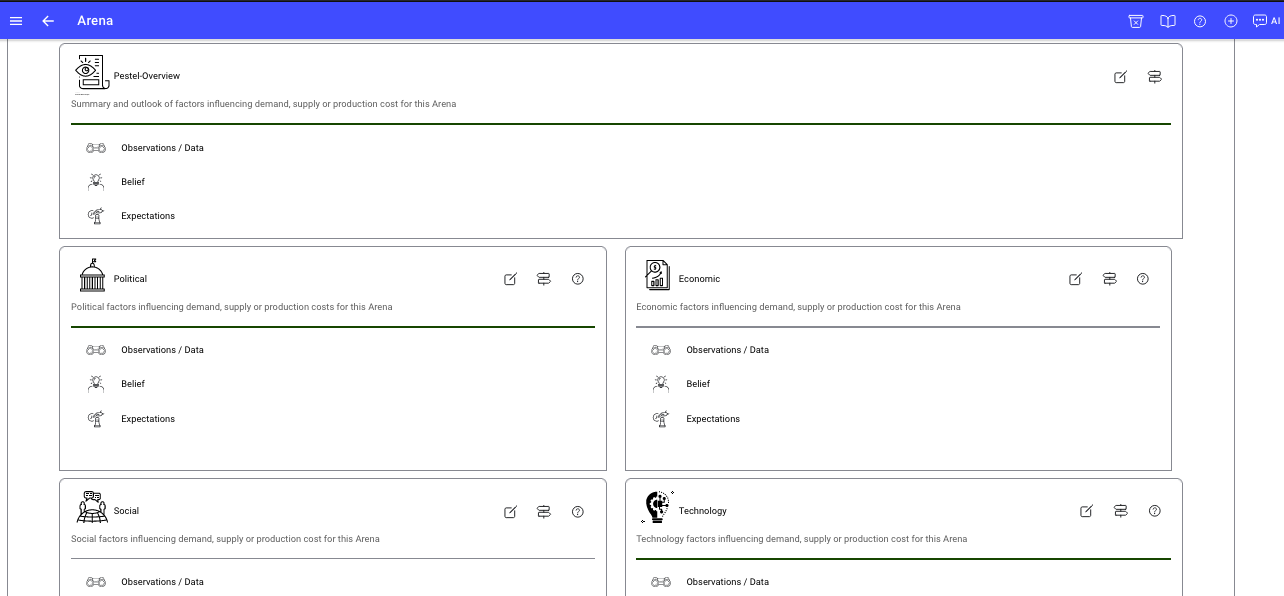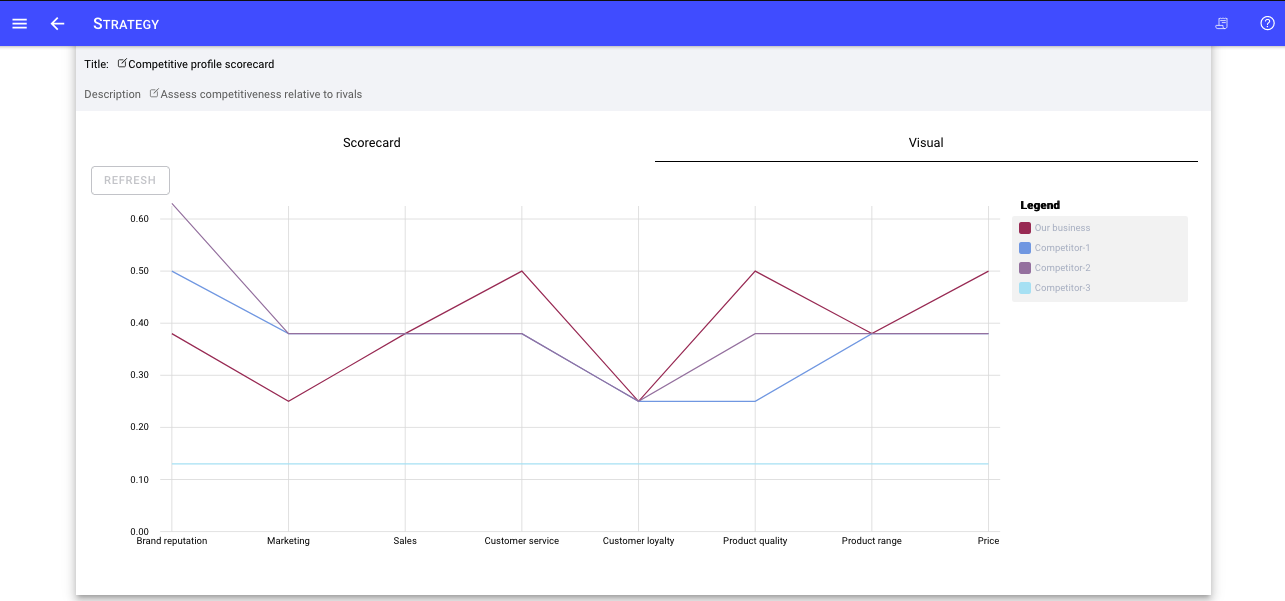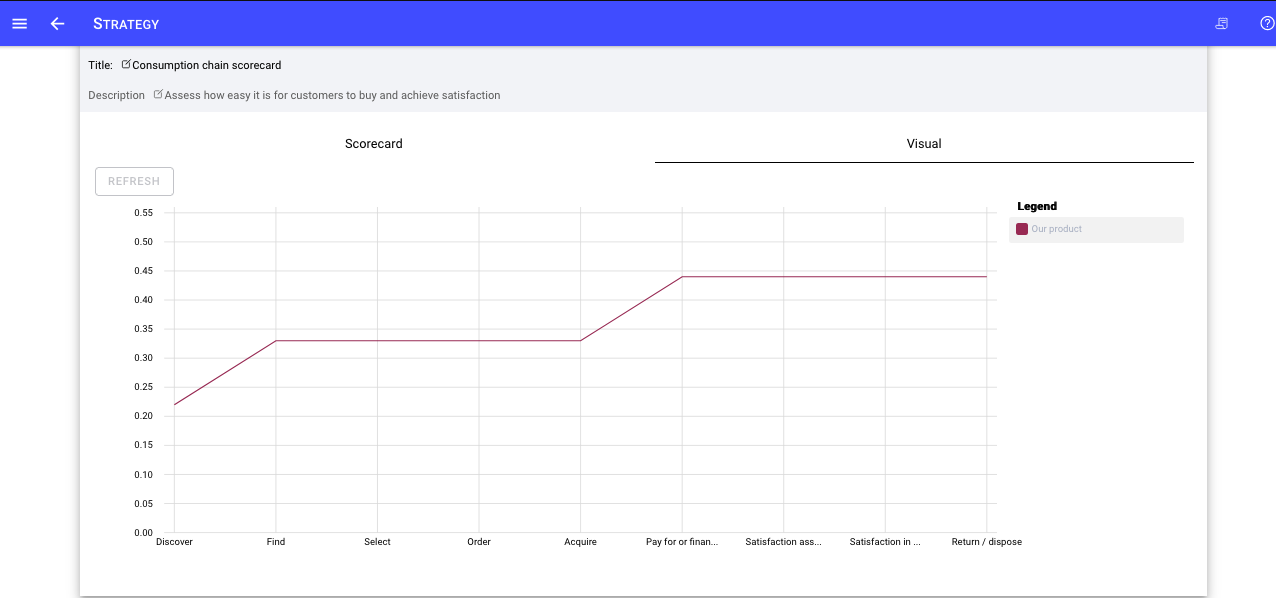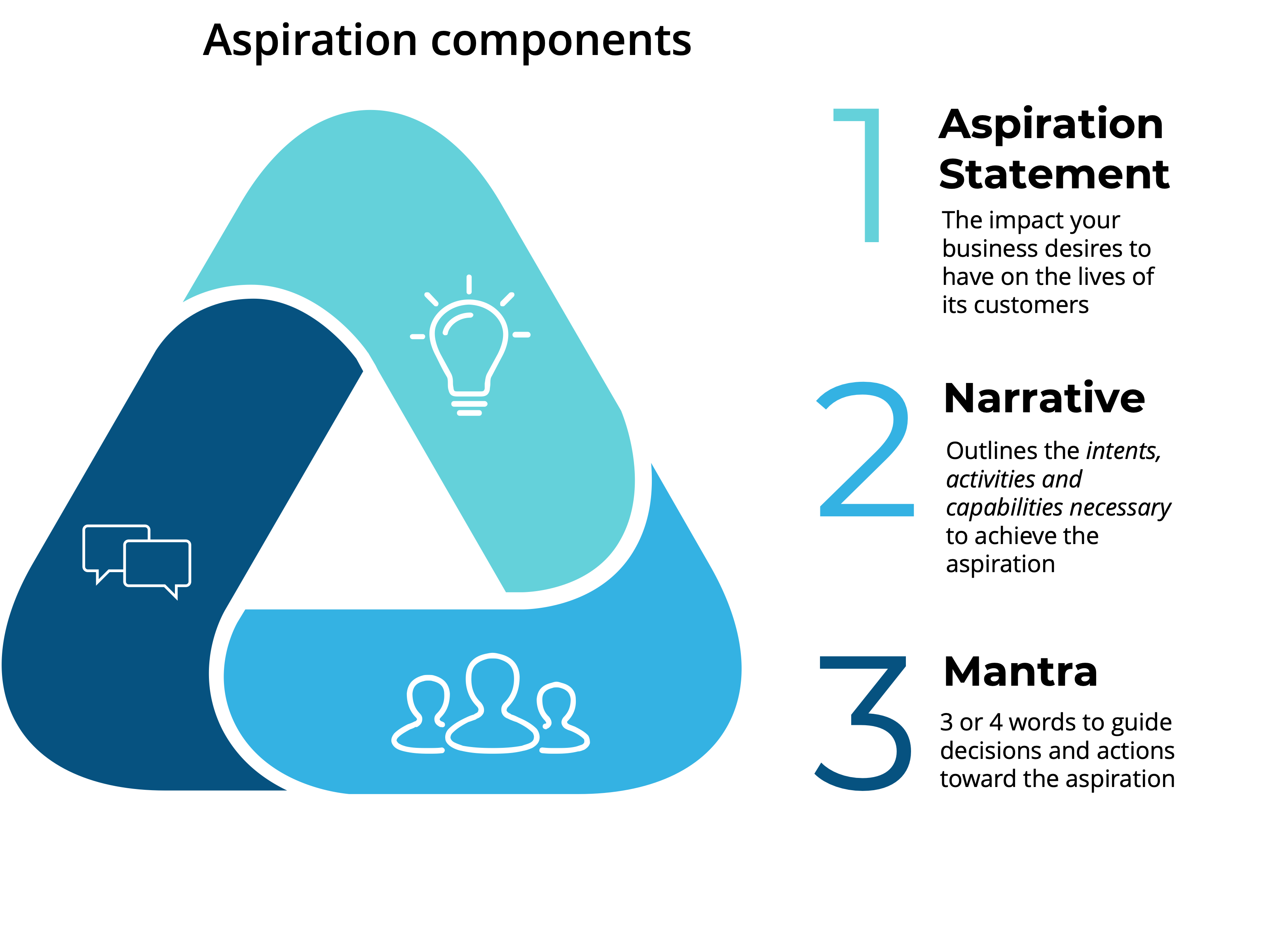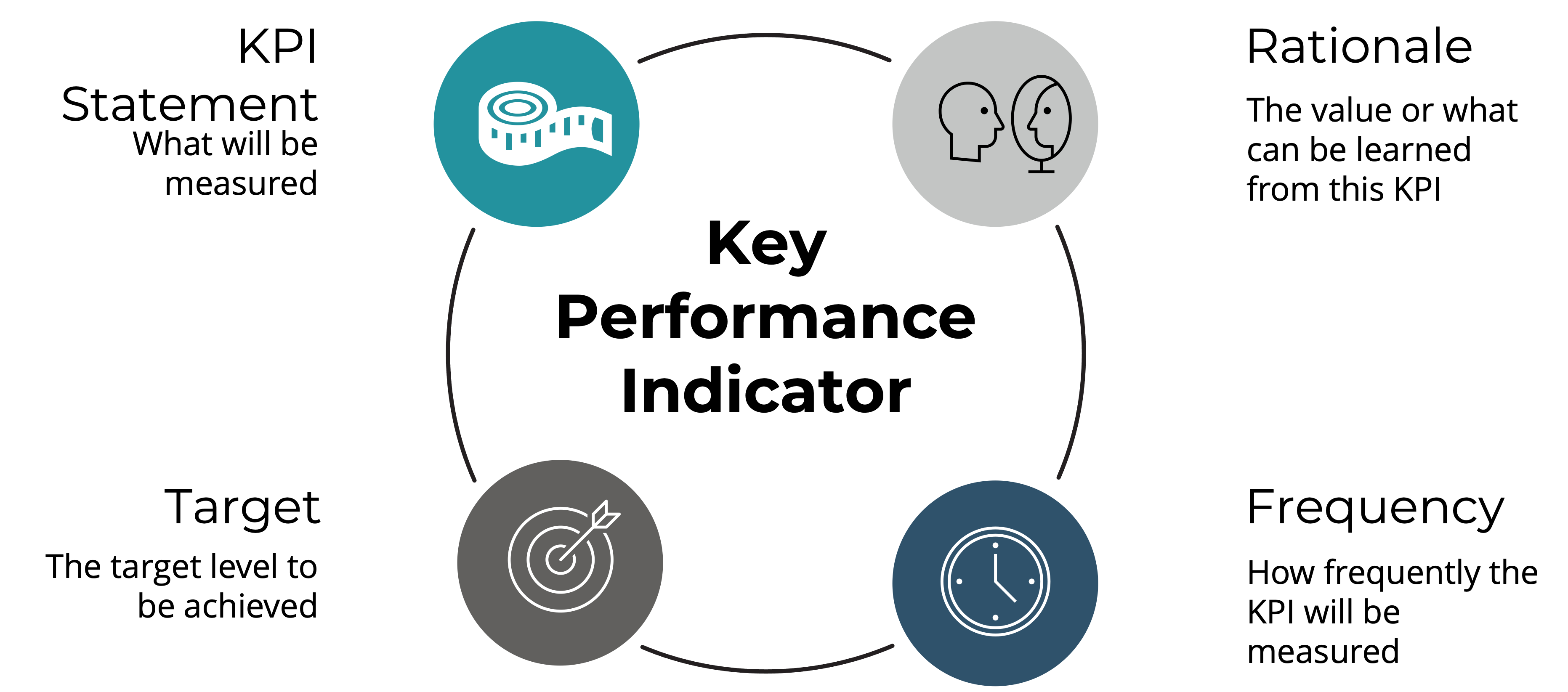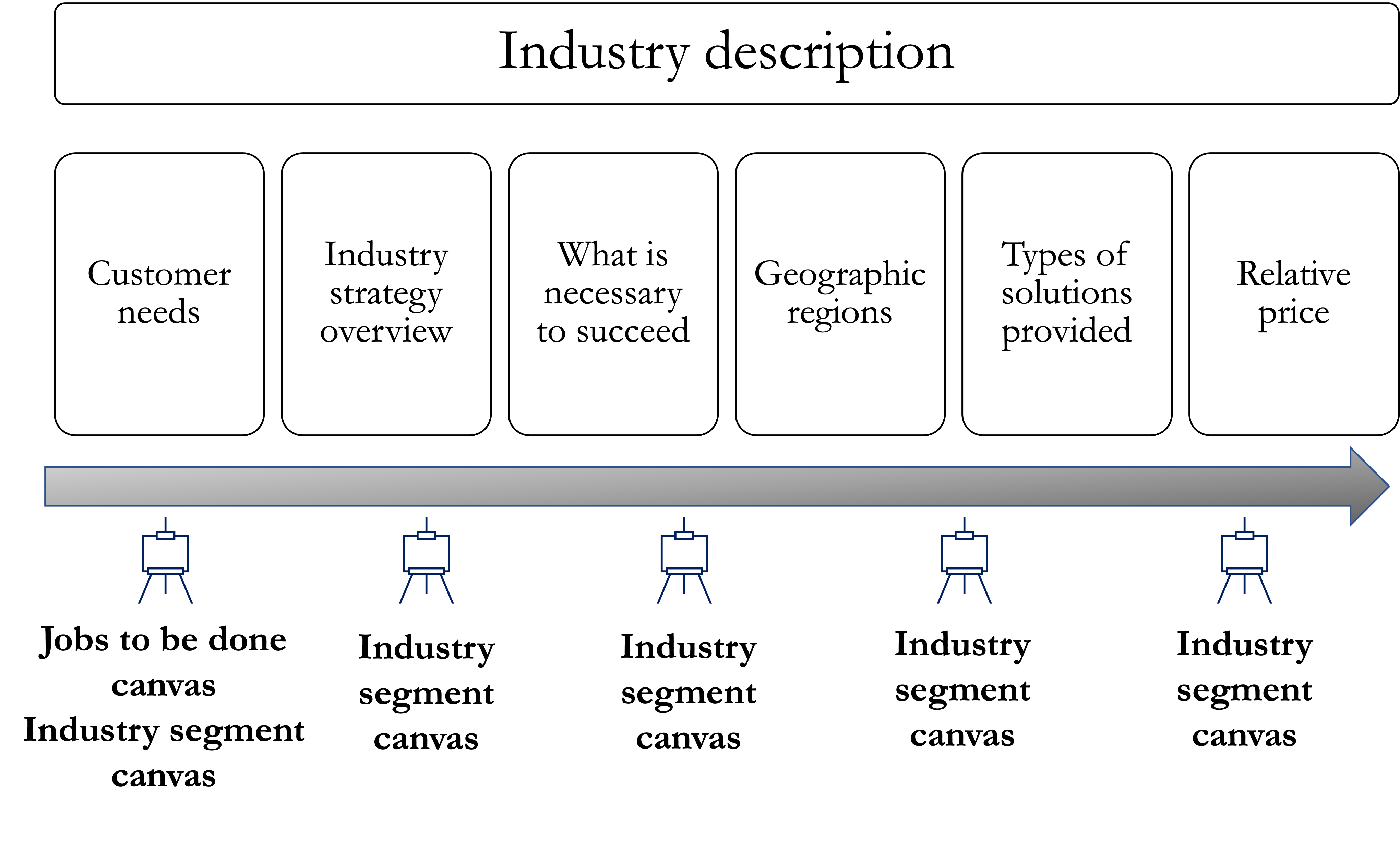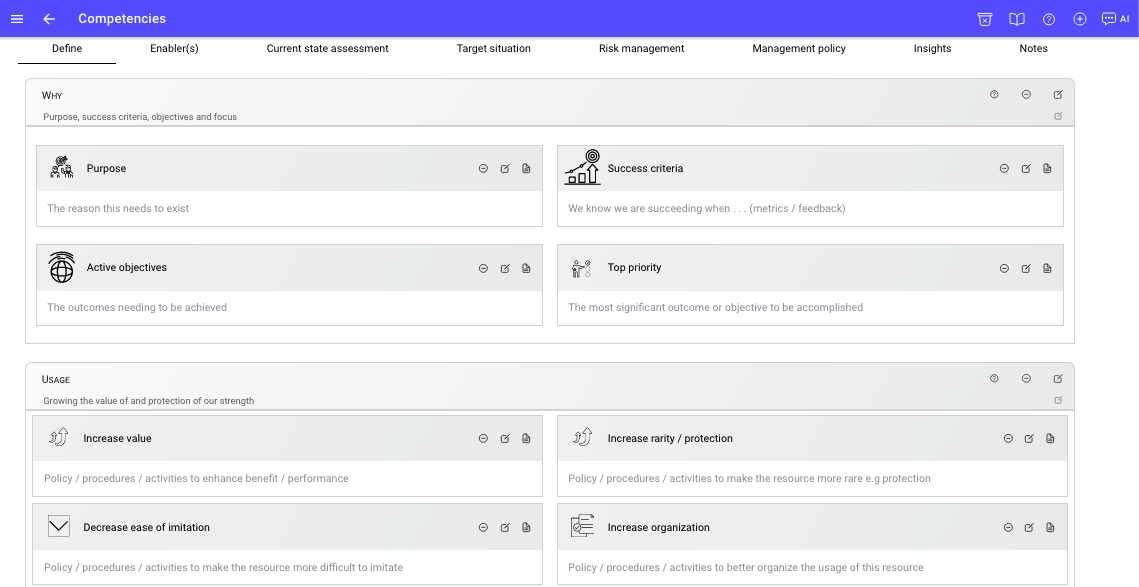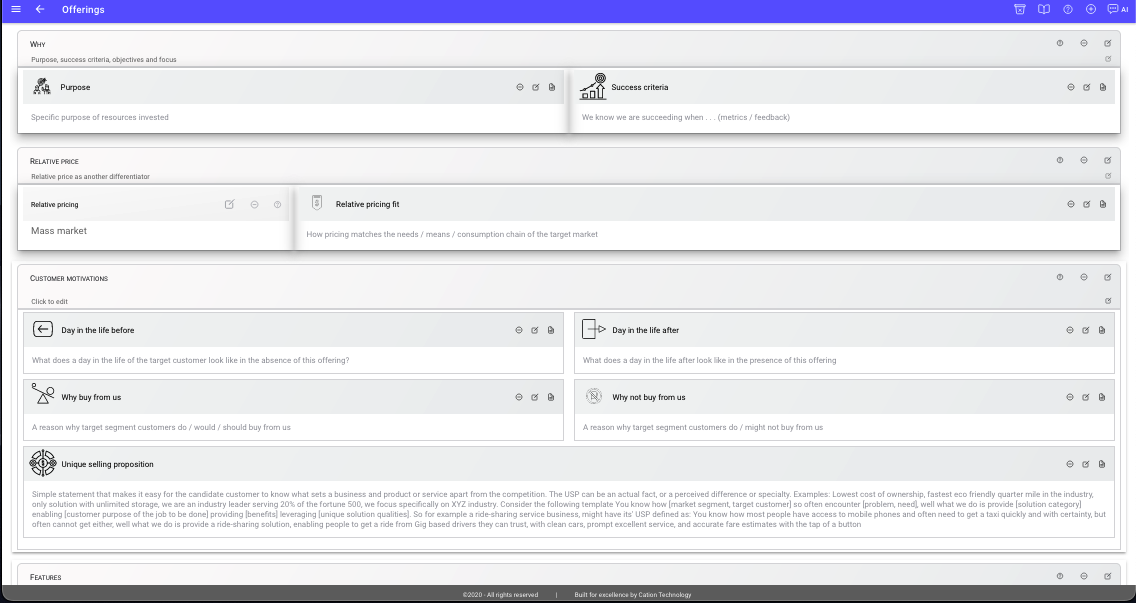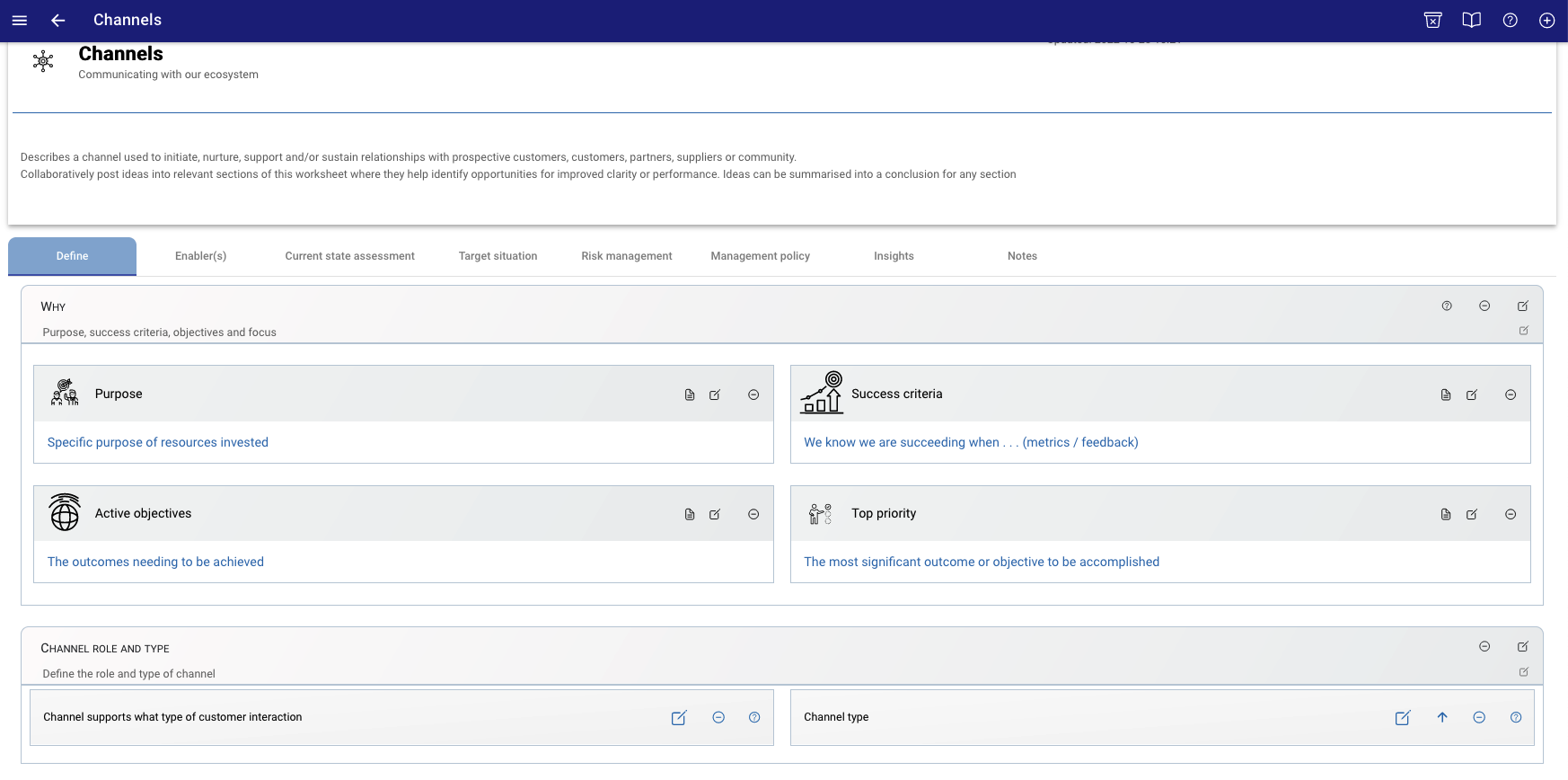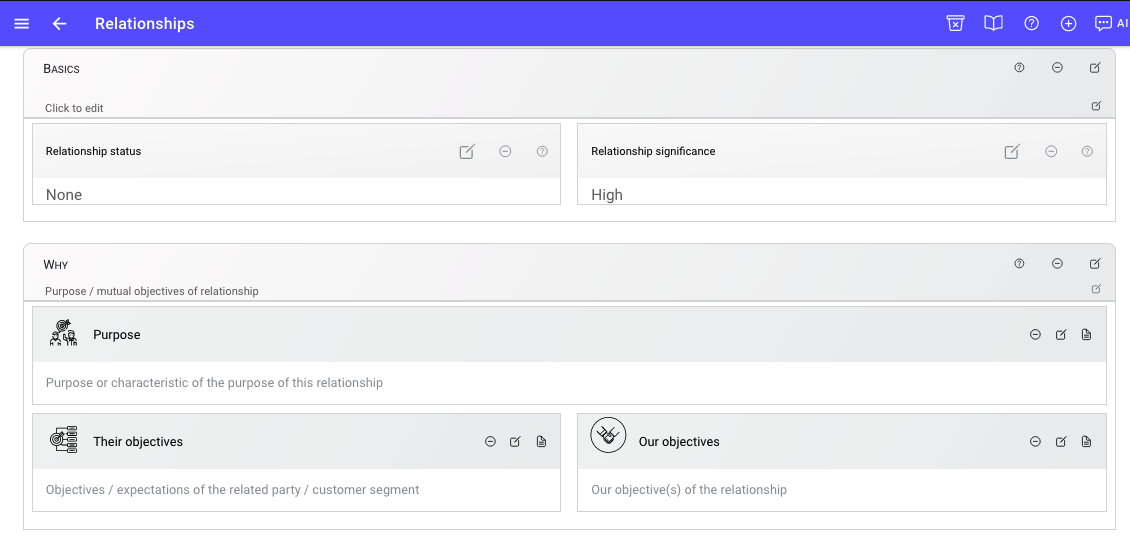The Strategic choices canvas enables leaders to collaboratively make, assure and communicate the strategic choices that every leadership needs to make to ensure aspirations, the playing field, winning approach, capabilities and resources are assured, mutually supportive and sustained.
The canvas below is a replica of the StrategyCAD™ Strategic choices canvas structure. It does not provide the StrategyCAD functionality but provides structure and intents are present.
Winning aspirationsThe foundations of value and excellence
|
|||||||
|---|---|---|---|---|---|---|---|
Business aspirationsAspirations enabling success
|
Customer aspirationsOur aspirations for our customers
|
||||||
Represents the aspirations of the business stakeholders - enablers
of fulfilling customer aspirations and the internal success drivers.
Includes factors such as:
|
Why the business needs to exist in terms of its' benefits to those that it serves. | ||||||
|
Business drivers |
Key Performance Indicators | ||||||
|
Activities that the business controls (leading indicators) and are correlated with enabling KPI's e.g. Inbound marketing leads followed up each month, Customer interviews completed, Customer enquires responded to within 24 hours. |
Measures indicators representing the extent the business is achieving its customer or business (stakeholder) aspirations (usually trailing indicators e.g. customer retention, Average recurring revenue, monthly recurring revenue). |
||||||
Identity and valuesWho we are and aspire to be
|
|||||||
| Define the business's essence: Pinpoint the identity, values, and principles that shape behavior and enable the business to be who it needs to be in the pursuit of aspirations. | |||||||
|
Identity |
Values and principles | ||||||
|
Who the business aspires to be e.g. Business identity: Innovative Market Leader in Technology, that delivers on its promises, takes on the big challenges to leave clients delighted and employees challenged but satisfied. |
Defines the core values that guide the conduct to represent who the business aspires to be. E.g Integrity, Empathy, Resilience etc. Defines the principles which fulfill the business identity and values. E.g. Transparent communication, Exceeding expectations, Determination to excel |
||||||
Where we playMarkets we focus upon
|
|||||||
Industry environment(s)Industry, industry segments and the forces that shape them.
|
OpportunitiesChance for advantageous strategic position. |
Value PropositionsDefines the target customer, value proposition and competitive differentiation. |
Market SegmentsDistinct group within a market defined by similar needs, characteristics, or behaviors. |
||||
| Industry, industry segments and the forces that shape them? | What are the most significant opportunities resulting from changes in the industry and external environment? | What value do we deliver to the customer? Which one of our customer’s problems are we helping to solve? | What are the characteristics of the groups or groups within a market that are accessible to the business that have the needs we can satisfy? | ||||
Market StrategyEnabling decisions for focused market engagement.
|
|||||||
Dominant Go-to-Market Strategy PatternEnrich clarity and focus of market engagement decision making
|
|||||||
| Identify if your market engagement will be product, marketing or sales led to inform or influence your subsequent marketing choices and how to win choices. | |||||||
| Product |
Pricing
|
Promotion | |||||
| Product: What is our product/service and how does it fit into the market? |
What is our pricing strategy? How does it affect our GTM? |
Place & Promotion: How will we distribute and promote our product/service? | |||||
| Threats | Brand | Customer messaging | Marketing channels | ||||
| Changes existing or emerging in the external environment to be responded to. | Product: What is our product/service and how does it fit into the market? | How our positioning is expressed and communicated across various channels and touchpoints. Our compelling and memorable statements that resonate with the audience, including slogans, taglines, and the persuasive copy used in advertisements and marketing materials. | Channels where our target customers and customers can recieve our messages? | ||||
|
Market Response and Adaptation
|
|||||||
| How will we measure market response to our product/service? What is our strategy for adapting to market feedback? | |||||||
How we WinHow we delight our customers and win in our market(s)
|
|||||||
| Articulates our game plan for winning in our market(s), encompassing all elements of our strategy to succeed. | |||||||
| Competitive Advantage | Core Competencies | Customer Journey | Customer Relationships | Channels | |||
| Describe your unique value proposition and why customers will choose you over competitors. | Detail the unique strengths and skills that enable your strategy and set you apart. | From awareness to advocacy? | What type of relationship does each of our customer segments expect us to establish and maintain with them? | Through which channels do our customer segments want to be reached? How are we integrating them with customer routines? | |||
|
Key Partners
|
Performance Gaps
|
Value delivery chain | |||||
| Who are our differential partners/suppliers? What resources, outputs, outcomes are we acquiring from partners? | Factors that may be holding an organization back. | How the various functional units such as Inbound or Input logistics, Product / Service, Marketing, Sales, Distribution, and Support along with support functions such as Technology, Human Resources, Procurement, Administration and management collaborate to ensure focus upon and effective delivery of the customer value proposition(s). | |||||
| Cost Structure | Revenue Streams | ||||||
| Defines the most important costs inherent in the strategic choices. | Defines the sources of revenue or the revenue models e.g. subscription, transactional, licensing etc. | ||||||
Execute and SustainWhere we are, what we need to and with what management systems
|
|||||||
| Situational assessment | Coherent action plan | Risks | |||||
| Provides a summary of where your business is relative to its' Identity, aspirations and other significant choices. What is being experienced that is working and what is not. |
Outline your key business goals and what you aim to achieve in the short to medium term. List the critical projects and actions needed to achieve your strategic objectives. Example:
Strategic Objective 1: Increase market share by 15% in the next 12
months. |
What are the most substantial risks to be mitigated in the strategy implementation? How will they be managed? Resource implications? | |||||
| Diagnosis | Innovation Pipeline | ||||||
| Identifies the most substantial but actionable constraint influencing the business that when resolved enables the business to advance upon its' aspirations. The diagnosis is the root cause for symptoms that may be being experienced across functional domains such as marketing, sales, product, operations etc. | Explain how you will continue to innovate and stay ahead in your market. | ||||||
| Guiding policy | |||||||
| Without specifying exactly what needs to be done, what does the business need to start doing, stop doing, do more of, less of and sustain to deal with the situation informed by the diagnosis. | |||||||
Strategy growth and review
Nurturing the strategy to fruition and beyond.
⚙

Strategic choices canvas is licensed under a Creative
Commons Attribution-NonCommercial 4.0 International License.
Attribution — You must give appropriate credit, provide a link to the license,
and indicate if changes were made.
You may do so in any reasonable manner,
but not in any way that suggests the licensor endorses you or your use.
NonCommercial — You may not use the material for commercial purposes.
No additional restrictions
— You may not apply legal terms or technological measures that
legally restrict others from doing anything the license permits.
References

|
Playing to Win: How Strategy Really Works, 2013, A.G. Lafely and Roger L. Martin |
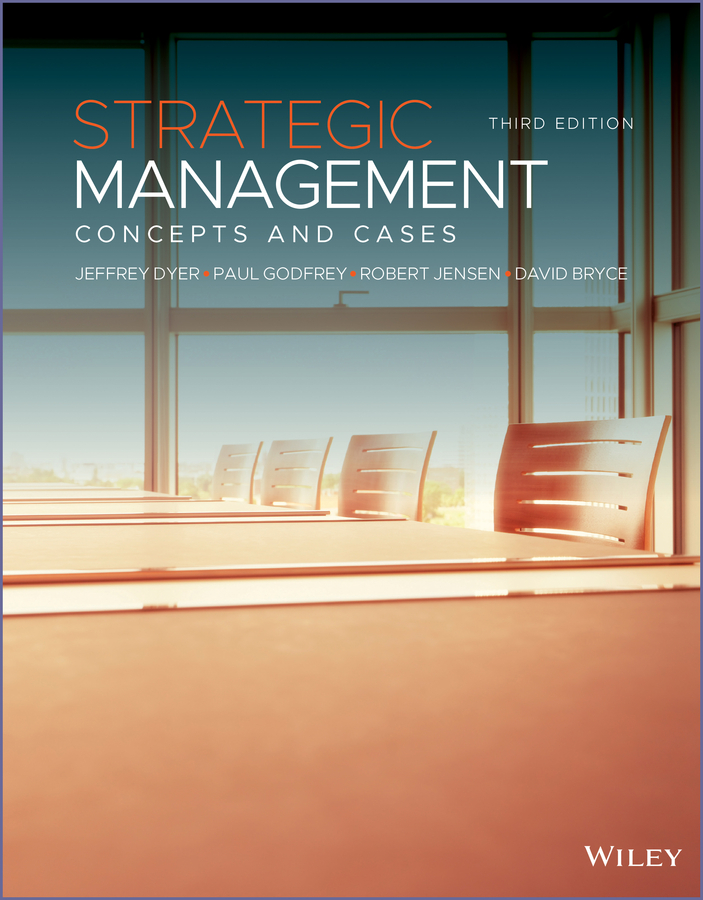
|
Strategic Management: Concepts and Cases 3rd Edition, 2016, Jeff Dyer, Paul C. Godfrey, Robert J. Jensen, David J. Bryce |

|
Better, Simpler Strategy: A Value-Based Guide to Exceptional Performance, 2020, Felix Oberholzer-Gee |

|
Understanding Michael Porter: The Essential Guide to Competition and Strategy , 2011, Joan Magretta |

|
Blue Ocean Strategy, Expanded Edition: How to Create Uncontested Market Space and Make the Competition Irrelevant , 2020, W. Chan Kim, Renee Mauborgne |


